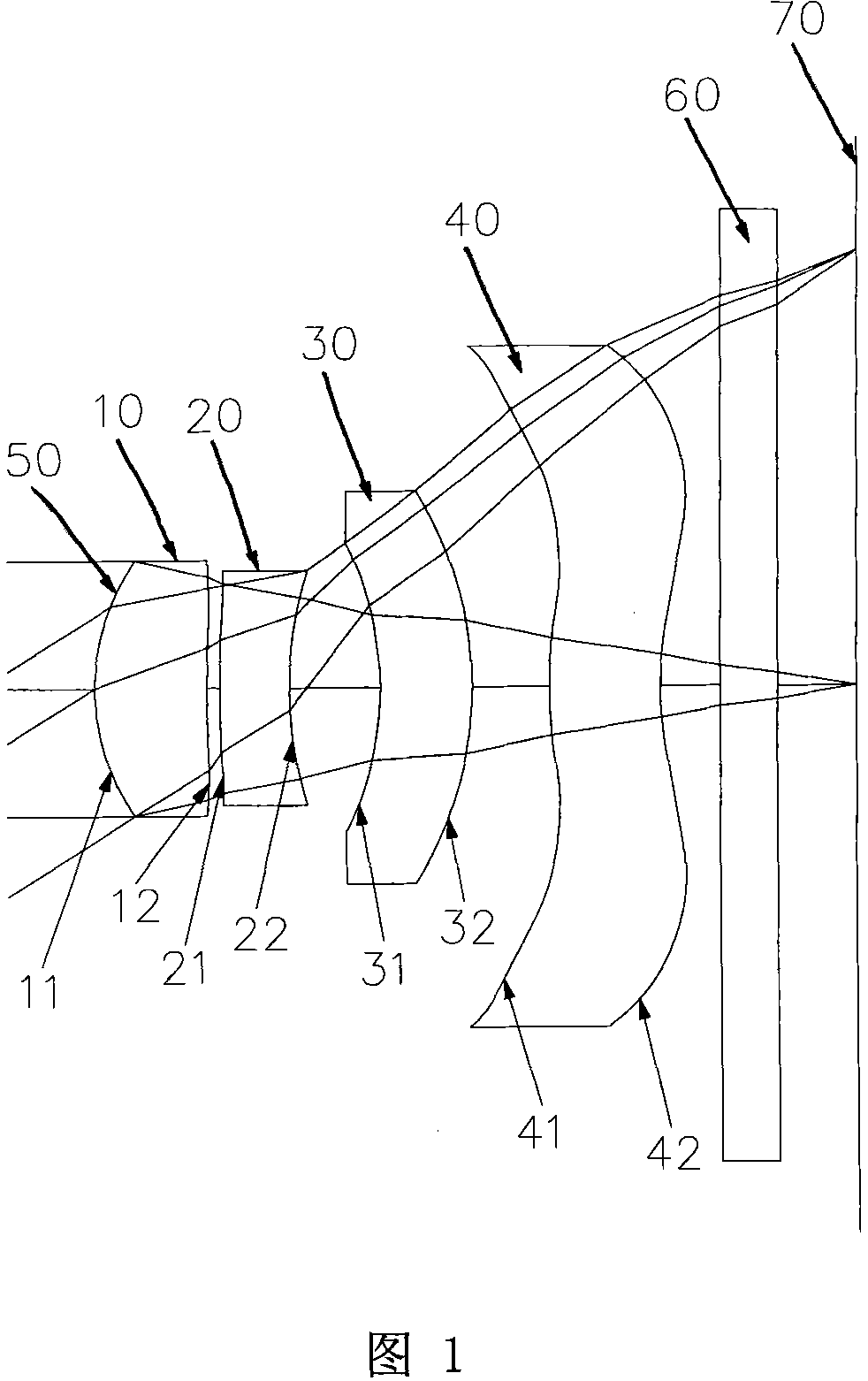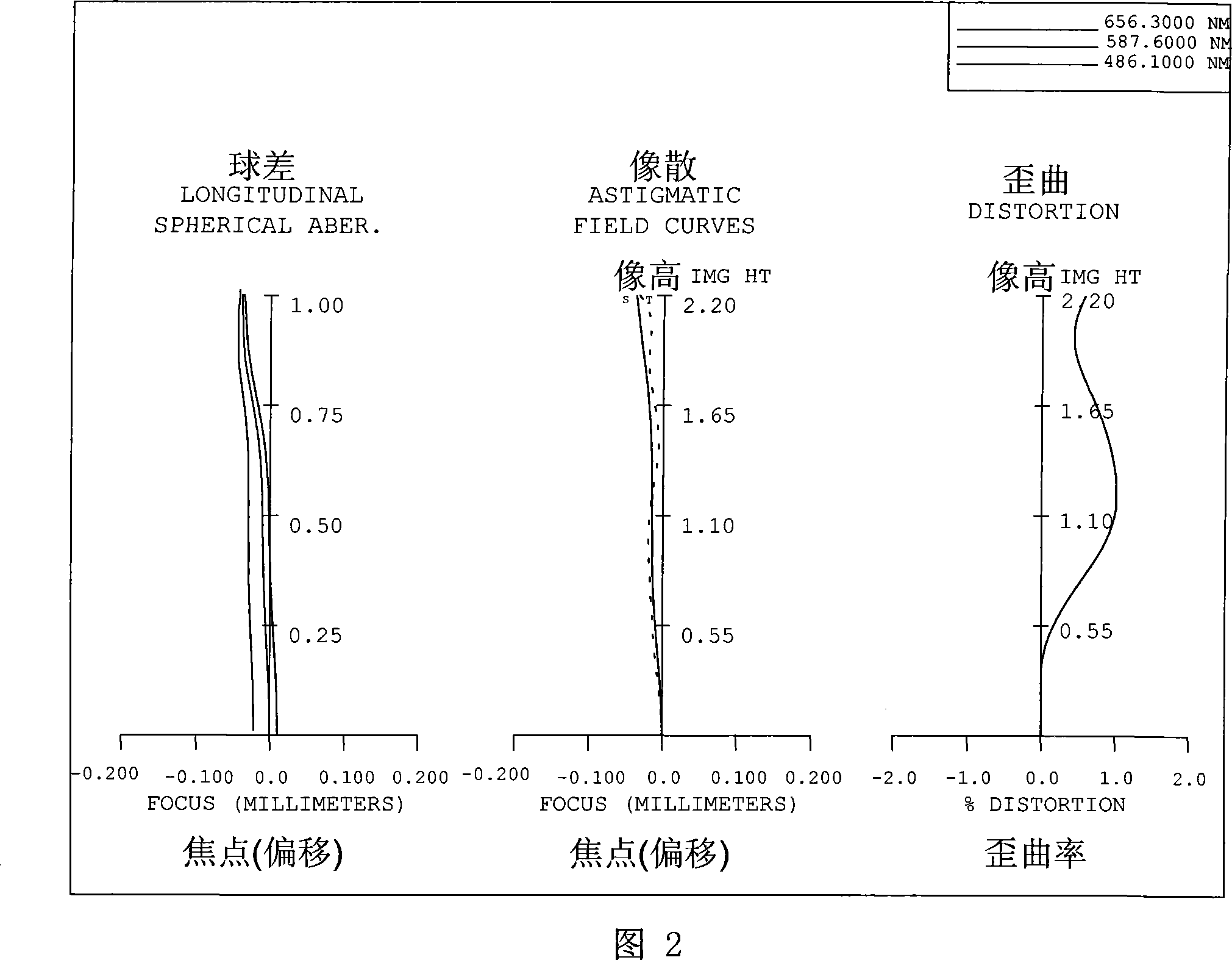Four-piece type optical lens group for imaging
An optical mirror and four-piece technology, applied in the field of lens groups, can solve problems such as manufacturing difficulties, lack of system freedom, and difficulty in shortening the overall length of the optical system, and achieve the effects of correcting aberrations, improving correcting astigmatism, and reducing length
- Summary
- Abstract
- Description
- Claims
- Application Information
AI Technical Summary
Problems solved by technology
Method used
Image
Examples
no. 1 example
[0044] Please refer to the first embodiment of the present invention figure 1 , for the aberration curve of the first embodiment, please refer to figure 2 , the first embodiment includes from the object side to the image side:
[0045] A first lens 10 with positive refractive power is made of plastic, the first lens 10 has a front surface 11 and a rear surface 12, and the front surface 11 of the first lens 10 is a convex surface, and the rear surface 12 of the first lens 10 is Concave surface, and the front surface 11 and the rear surface 12 of the first lens 10 are all set as aspherical surfaces;
[0046] A second lens 20 with negative refractive power is made of plastic. The second lens 20 has a front surface 21 and a rear surface 22. The front surface 21 of the second lens 20 is convex, and the rear surface 22 of the second lens 20 is concave. , and both the front surface 21 and the rear surface 22 of the second lens 20 are aspherical;
[0047] A crescent-shaped third l...
no. 2 example
[0086] Please refer to the second embodiment of the present invention image 3 , for the aberration curve of the second embodiment, please refer to Figure 4 , the second embodiment includes from the object side to the image side:
[0087] A first lens 10 with positive refractive power is made of plastic, the first lens 10 has a front surface 11 and a rear surface 12, and the front surface 11 of the first lens 10 is a convex surface, and the rear surface 12 of the first lens 10 is convex surface, and the front surface 11 and the rear surface 12 of the first lens 10 are all set as aspherical surfaces;
[0088] A second lens 20 with negative refractive power is made of plastic, the second lens 20 has a front surface 21 and a rear surface 22, and the front surface 21 of the second lens 20 is concave, and the rear surface 22 of the second lens 20 is Concave surface, and the front surface 21 and the rear surface 22 of the second lens 20 are all set as aspherical surfaces;
[008...
no. 3 example
[0119] Please refer to the third embodiment of the present invention Figure 5 , for the aberration curve of the second embodiment, please refer to Figure 6 , the third embodiment includes from the object side to the image side:
[0120]A first lens 10 with positive refractive power is made of glass, the first lens 10 has a front surface 11 and a rear surface 12, and the front surface 11 of the first lens 10 is a convex surface, and the rear surface 12 of the first lens 10 is convex surface, and the front surface 11 and the rear surface 12 of the first lens 10 are all set as aspherical surfaces;
[0121] A second lens 20 with negative refractive power is made of plastic, the second lens 20 has a front surface 21 and a rear surface 22, and the front surface 21 of the second lens 20 is concave, and the rear surface 22 of the second lens 20 is Concave surface, and the front surface 21 and the rear surface 22 of the second lens 20 are all set as aspherical surfaces;
[0122] O...
PUM
 Login to View More
Login to View More Abstract
Description
Claims
Application Information
 Login to View More
Login to View More - R&D
- Intellectual Property
- Life Sciences
- Materials
- Tech Scout
- Unparalleled Data Quality
- Higher Quality Content
- 60% Fewer Hallucinations
Browse by: Latest US Patents, China's latest patents, Technical Efficacy Thesaurus, Application Domain, Technology Topic, Popular Technical Reports.
© 2025 PatSnap. All rights reserved.Legal|Privacy policy|Modern Slavery Act Transparency Statement|Sitemap|About US| Contact US: help@patsnap.com



